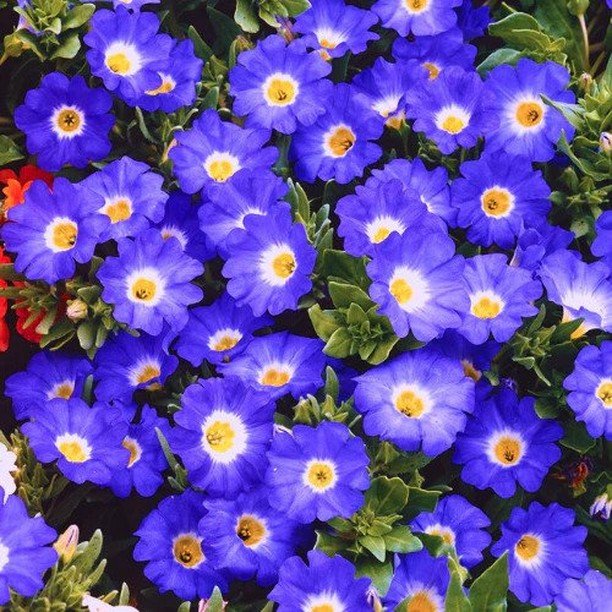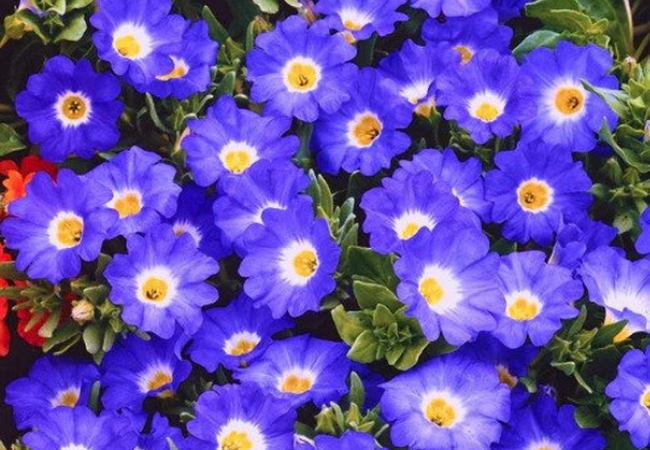Discover the charming Nolana Flower: learn how to grow, care for and enjoy these unique blooms in your garden. Perfect for beginners and experienced gardeners alike.
Have you ever heard of Nolana flowers? These pretty little blooms might not be as famous as roses or daisies, but they’re definitely worth getting to know. In this article, we’ll talk about everything you need to know about Nolana flowers, from how to grow them to why they’re so special.
Here is an easy and verified information chart for Nolana:
| Category | Information |
|---|---|
| Botanical Name | Nolana spp. |
| Common Name | Nolana |
| Plant Type | Annual or perennial |
| Hardiness Zone | Zones 9-11 |
| Sun Exposure | Full sun |
| Soil Type | Well-draining, sandy or loamy soil |
| Watering | Low to moderate |
| Growth Habit | Trailing or spreading |
| Height/Spread | 6-12 inches tall, spread of 12-18 inches |
| Special Features | Drought tolerant, colorful flowers |
What are Nolana Flowers?

Nolana flowers are small, colorful plants that originally come from South America. They’re part of the Solanaceae family, which also includes tomatoes and potatoes. These flowers look a bit like petunias, but they have their own unique charm.
Types of Nolana Flowers
There are different kinds of Nolana flowers, including:
- Nolana paradoxa: This type has blue flowers and is often called Chilean bellflower.
- Nolana humifusa: These have purple or blue flowers and tend to spread out along the ground.
- Nolana rupicola: Known for its bright blue flowers with white centers.
How to Grow Nolana Flowers
Planting Nolana
To grow Nolana flowers in your garden:
- Choose a sunny spot. Nolanas love full sun.
- Plant seeds in spring after the last frost.
- Space seeds about 6-8 inches apart.
- Cover seeds lightly with soil and keep the soil moist.
Soil and Water Needs
Nolana flowers like well-draining soil. They don’t need super rich soil, but adding some compost can help. Water them regularly, but don’t let the soil get too wet.
Sunlight and Temperature
These flowers need lots of sun and warm temperatures. They’re great for USDA hardiness zones 9-11, but in colder areas, you can grow them as annuals.
Fertilizing
Nolana flowers don’t need much fertilizer. If you want to feed them, use a balanced, water-soluble fertilizer once a month during the growing season.
Caring for Nolana Flowers
Pruning and Maintenance:
Nolana flowers are pretty low-maintenance. You can pinch off the tips of young plants to make them bushier. Remove dead flowers to encourage more blooming.
Pest and Disease Control
These flowers are usually pretty tough, but watch out for:
- Aphids
- Spider mites
- Root rot in wet conditions
If you notice any pests, try using natural pest control methods first.
Winter Care
In warm climates, Nolana flowers can live for several years. In colder areas, they’re usually grown as annuals. You can try bringing potted plants indoors for the winter.
Using Nolana Flowers in Your Garden
Garden Design Ideas
Nolana flowers are great for:
- Rock gardens
- Hanging baskets
- Ground cover in warm climates
- Edging flower beds
Companion Plants
Nolana flowers look nice with other sun-loving plants like:
- Petunias
- Marigolds
- Zinnias
Benefits of Nolana Flowers
- They attract pollinators like bees and butterflies.
- They’re drought-tolerant once established.
- They bloom for a long time, often from spring to fall.
Nolana flowers might not be the most famous garden plants, but they’re definitely worth trying. They’re pretty, easy to grow and can add a unique touch to your garden. Whether you’re new to gardening or have been doing it for years, give Nolana flowers a chance. You might just discover a new favorite!
Remember, every garden is different, so don’t be afraid to experiment and find what works best for you. Happy gardening!
For more gardening tips and plant care guides, visit usagardenhub.com.

